How did Orchiata bark in Gritty Mix work out for those who tried?
Hi,
There've been several threads over the past year or two about using Besgrow Orchiata in Gritty Mix.
How did it work for you?
Was the 6-9 mm "classic" or the 3-6 mm grade used?
And has Al ever weighed in on this interesting, treated bark. Can't seem to find any comment by searching.
If I understand the mixes a bit from his writings, looks like Orchiata might function well for the filler and public-relations (organic) aspect of bark, but against the "inexpensive" attribute. (The reported even slower breakdown of Orchiata than other barks is probably ok for Gritty, but maybe a bit against 5-1-1.) But could be misinterpreting...
Been considering experimenting with Al's mixes if I can get the components. At my location, it's unfortunately starting to look like internet ordering shipping fees may balance the $ in, gas tolls, and time it would take to source "locally"...
Comments (54)
ash1970_gw
Original Author9 years agoAppreciate hearing about your experiences. Thank you.
(FWIW, looks like best-case cost for a bag shipped to my location would work out to be about the same as picking up an equal volume of Repti-Bark at a local pet retailer.)
greenman28 NorCal 7b/8a
9 years agoThe Repti-Bark would have a lot of large pieces, so the Orchiata would be a better value if useable straight out of the bag. I've never used it, however.
Josh
Related Professionals
Norfolk Landscape Architects & Landscape Designers · Tomball Landscape Architects & Landscape Designers · Brownsville Landscape Contractors · New Providence Landscape Contractors · Smyrna Landscape Contractors · South Portland Landscape Contractors · Downey Solar Energy Systems · Elmhurst Solar Energy Systems · Western Springs Solar Energy Systems · Cincinnati Window Contractors · Kuna Window Contractors · Naples Window Contractors · Ocean Pines Window Contractors · Alsip Fence Contractors · Brooklyn Fence Contractorsthe_yard_guy
9 years agoI have not used Orchiata bark but from what I've read it's very high-quality material. Probably the best around for making these soil mixes. The cost of the bark and the shipping costs are the only negatives I can see.
The photos I've seen look much better than the pine bark I have access to.
TYG
horti2791
8 years agoHi,
Hope it's not a serious faux-pas here to resurrect an old thread.
Has anyone ever screened Orchiata Classic/6-9 mm to estimate actual size distribution? Would be interested in how much is retained by a 1/4" screen (i.e too big for a typical "minimal-PWT" GardenWeb gritty-mix.)
I found a hefty portion of Precision/3-6mm flew through a 1/8" screen (square openings which Pythagoras said is about 3.2mm on each side and 4.5mm diagonal). (Virtually all went through 1/4".)
Thanks.horti2791
8 years agoIf it helps any later web searcher, it looked like a bit over half of Orchiata Classic/6-9 mm was retained by a 1/4" screen (opening should be near 6.3mm each side/9mm diagonal). Bark sample taken from just below the top level of a full bag.
jane__ny
8 years agoI am an orchid grower and do use Orchiata on my 'dirt' plants. The best way to buy it at a reasonable price would be through an Orchid Society. Anyone can join or attend without joining. There are vendors present where you can buy large bags at a lower cost than buying on line.
I would recommend finding a local Orchid Society in your area and attending a meeting. They usually meet once a month. You don't have to be a member to purchase anything.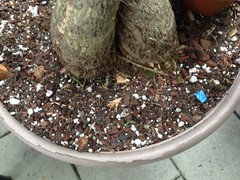
I use the small size Orchiata mixed with large sponge rock (perlite) with some potting soil mixed in for moisture retention. I do not screen. Large perlite can be purchased at these meetings as orchid growers use the larger size.
Too expensive to pay shipping the bark.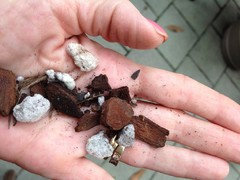
Janetapla (mid-Michigan, USDA z5b-6a)
8 years agoMost of my bonsai buddies use the gritty mix, and though I still have a fair supply of fir bark on hand, our regular source has dried up and alternate sources have proven to be ridiculously expensive. At least one of the guys I see regularly just mentioned he's been using the precision #8 orchiated bark and likes it a lot.
Keep in mind that when you add a bunch of big chunks to fine ingredients, you end up with primarily the physical properties of the fine ingredients only. IOW, if you mix an equal portion of marble size pieces with peat or potting soil, you wind up with the same drainage, aeration, and PWT ht, as you would have had if you used the peat or potting soil alone. When it comes to potting media, size and ratios matter. You can combine several ingredients in a ratio that yields a soil close to perfect (from the plant's perspective), or you can combine the same ingredients in a ratio that yields a soil that most of us would consider to be unusable or borderline unusable at best.
Al
jane__ny
8 years agoWith Bonsai in a small pot, I suppose it would be most important to keep the particle size small and consistent.
I beg to differ when dealing with larger plants in large pots. I have not lost a single plant to root rot nor decrease in growth. I am an also orchid grower and grow some in rock, others bare root but most a combination of bark, sphagnam moss and perlite. Obviously, they are all different size particles.
All of my plants drain quickly. I like my plants to hold some moisture so I do not become a slave to watering. I also like light-weight as I am a small woman who must move her plants around on a fairly regular basis; 10, 12, 16, and 20" pots become quite heavy.
I think the logic behind exclusively using a grit type mix makes sense, however it doesn't for me. I do not find it necessary. If someone needs a logical, measured type approach to plants, then grit is probably the way to go.I do recommend it to growers who like to control every step of planting, repotting and feel secure knowing they are following the perfect formula and that it will guarantee success. There are many folks who feel most comfortable with a logical, technical approach to growing.
But there are many people who are not able to find the ingredients nor want to. I offer a simpler approach so they do not go back to old ways which do not work for sure. Good drainage is very important. But, one has to deal with the physical limitations, cost and interest.
My advice works for most people who want to grow. It incorporates the mix, light and watering practices. Its a basic method and brings satisfaction to the many people I know and help.
Jane
jane__ny
8 years agoAl, Al, Al...
Would I ever teach people to grow in pudding? You know very well I don't grow my plants in pudding. Please don't be rude.
Janetapla (mid-Michigan, USDA z5b-6a)
8 years agoThere is nothing rude, inaccurate, or misleading in my offering, so please don't pretend there was.
Al
tropicofcancer (6b SW-PA)
8 years agoI have to now find out source for orchiata bark and experiment with it. I love this madness.
Last year I experimented with rooted bougainvillea cuttings in two variations of the 511 mix. In one I did not sift the bark except for the 1/2" and larger pieces. In the second one I sifted the bark to get the fines out (less than 1/8") and no peat. So you could say 510 mix. Otherwise, same size of clay pot, same location, etc. Initially, they both grew about the same rate. But by June this year differences between the two started to show. The 510 mix needs daily watering but the plants are twice the size of the other one and about 4 times as much leaf mass. Both should really be in the gritty mix though. Task for next spring.
tapla (mid-Michigan, USDA z5b-6a)
8 years agoWhat you said is a very good illustration of how people make compromises to suit the order of their priorities. If you want to get the most from your soil, keeping the fine particles to a minimum (which necessitates watering more frequently) offers greater opportunity for plants to realize their potential. When you compromise because you can't/don't want to water as frequently as is required when using highly aerated media that doesn't support that layer of soggy soil that allows extended intervals between waterings, the convenience comes with a price. If growers are left to believe there is no cost in terms of lost potential, they can't and won't make good decisions based on the fact that the best one should expect with week-long or longer watering intervals is mediocre performance.
We don't want to mislead and say the more often we water the greater are the opportunities for plants to realize their inherent potential, but it's a pretty safe bet to say that up to a certain point, plants will put their appreciation on display for being grown in media that actually do require more frequent watering to keep them adequately moistened; witness TofC's observations immediately above as yet another example of support for that notion.
Thousands of growers are abandoning the commercially prepared water-retentive media they've been growing in because A) they gain enough insight to realize it's limiting B) they quickly discover that there is an inverse relationship between excess water retention and plant health C) once explained, the reasons why plants are limited by most media due to excess water/lack of oxygen make perfect sense. Not a day goes by that I don't get to enjoy sharing in someone's "Oh Yeah!" moment, either on a forum or in my mail.
It's probably not unreasonable to believe that every one of us would prefer to rise above mediocrity, but as in most endeavors, it takes the will to make the effort to gain an understanding of HOW to do it, and then additional effort to follow through with it. Not everyone is willing or able to make the effort, but that doesn't make an understanding of how to do it and nuances associated with that knowledge of no value. For those who can't or don't wish to go through the effort of trying to optimize root vitality, just understanding what it takes is very often enough to 'turn on the light' that makes available many options that allow the grower to, to some degree, work around the limitations of poor media. It's not an 'all or nothing' approach those of us who have found success using media with less water-retention limitations espouse, we're just as willing to help growers use simple science to reduce the impact of limitations associated with heavy (water-retentive) media.
When practices are likely to result in mediocre results, it's always best to enlighten the grower to that probability. Those of us who can, regularly suggest strategies that help growers advance their proficiency. While it's perfectly fine to embrace or be satisfied with mediocre results, virtually no one comes here seeking to aspire to mediocrity. Give them information that will help them to shuck off limitations imposed by limiting media and let them decide how to most appropriately order their priorities.
It's interesting to suddenly see the side of us the nerd lives on come out. A topic seemingly as mundane as soil science has proven over and over (and continues) to be the genesis of conversations effectuating as much enthusiasm as any I've seen on this site. Whoda thunk it?
Al
jane__ny
8 years agoNo pretense Al. We've been down this road before. You know full well I do not grow in pudding nor would I ever recommend anyone should.
I have found you can have happy, health plants changing just a few things. Surprisingly, it doesn't include grit mix. But I use a very well drained mix that I make using a potting mix, bark and perlite. I push light to the max no matter what plant I'm growing. Light should gradually be offered without stressing the plant. Enough to encourage steady, healthy growth. No more than that.I would suggest, people who grow Bonsai should adapt the advice they offer to people growing in large containers or planters, taking into consideration the growers limitations. People who grow large container plants in homes have difficulty dealing with watering and drainage and moving heavy plants around. Little itty bitty bonsai plants can sit on trays or over sinks for watering. They can be physically carried around. How easy that is!
Using some sort of peaty mix to hold moisture is not unreasonable when dealing with large containers. Bark helps, but large plants need more moisture holding capacity. Perched water and all that, means nothing if the plant is not getting watered properly or getting enough sunlight. Good sunlight, good growth... good growth, active roots using the water. Under-lit plants will not grow well despite any mix. I would love to see people discuss the areas they grow in, the type of light exposure and air movement. So many different growing issues could be well served by a forum which deals with the 'whole picture.'
Janetapla (mid-Michigan, USDA z5b-6a)
8 years agolast modified: 8 years agoI didn't say you grow in pudding. I said, "The last thing we want is for growers to think that a pudding-like soil is the best they can do", and I was referring to soils like MG et al similar, which are very often labeled by many with descriptors analogous to pudding or mud. I can say, however, that the proportions you describe using does leave a lot of potential lying on the table, something you readily acknowledge. A well-designed mix takes into account the %s of each ingredient and combines them in such way that the net result benefits the plant. If you start with a medium that needs amending in order for the grower to consider it serviceable, we probably shouldn't call that medium well-designed. If we amend it ineffectually, we still wouldn't call the result 'well-designed'. We all know that using a small peat or potting soil component mixed with other coarse ingredients can be useful, but too much fine material is what brings growers to the fora seeking relief from waterlogged soils. You embrace the same science we all embrace, but won't see that there is VERY little physical benefit in adding anything coarse to predominately fine materials unless the materials are combined in such a way that there is not enough fine material to fill all the potential air spaces between the coarse material.
A pint jar of BBs would be wonderfully aerated and drain very thoroughly, but that all goes away if you add fine sand or peat equal to even 1/3 of the volume of BBs. Also, it's cognitively dissonant to suggest that giving plants more light relieves them of the limitations imposed by a partially saturated soil. How can plants grow faster/better when being deprived of oxygen on a regular basis?
I get the part about 'too heavy', 'too much effort', 'takes too long', ' don't want to water so often', ..... but those are all personal issues any of us can resolve by buying a bag of soil and planting something in it. We all clearly understand that very simple fact. Each of us already knows we CAN order our priorities in such a way that growing moves more toward the convenient side and away from any additional effort. There never was and likely never will be disagreement over the fact you CAN compromise if you like. It's fine to tell a grower what's easiest from the grower's perspective, but 'easy and convenient' usually has a price. I'm far more interested in helping growers understand what's best for the plant so they can weigh those options intelligently against what's best for the grower.
jane__ny
8 years agoI appreciate your civil response.
I never advise anyone to plant in a bag of potting soil. All mixes need amending. Yours certainly does.
Potting soil is the 1/3 of the peat. I recommend 1/3, 1/3, 1/3. But I always ask what the plant is, what the conditions it is growing under ...light, temps. Depending on that, I could change that around. If low light, less potting mix, more bark. One needs the whole picture before recommending. People need gentle education. That is what I do. It is what I believe. The environment, the plant and the growers style has to be taken into the whole picture.
I am well aware of your analogies and technical diagrams. You don't need to waste your time, typing, copying/pasting for me. It all sounds perfect and makes logical sense.
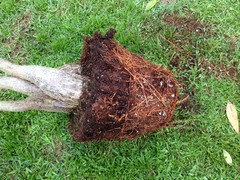
But I have found a different way and it is what I do, what I advise and it works.
I am well aware of what I am doing. I do not grow Bonsai (although I have 4 which are doing quite well in my mix, but they are not my interest.) I have read page upon page of diagrams and technical explanations over the years. You have put much effort and time into your responses. Many appreciate it.There are growers (majority) who are looking for an alternative. That is what I am offering for large containers. Actually, my suggestions work for small containers as well (not bonsai).
I don't have the time or energy to research theories to back up what I suggest. What I have is many years of experience with what works for me and other gardeners. It works.I am a orchid gardener. As you are a bonsai gardener. We both learn through our successful experiences. We also learn through our failures. Our experiences and knowledge can offer help and techniques which help people begin to learn in a way that is manageable. I have learned that is so important. It spurs interest and a possibility that the grower will move beyond simplicity. I call it 'baby-steps.'
My recommendations to novice growers is designed to help them succeed with their plant. They can learn about their plant, where it originated, the needs of that particular plant. Light, temps, water, food. That's where it begins. I give basic, simple beginnings. Usually it has to do with light. Get growth going, get roots growing. Learn how to water. So very important.
We are coming from different directions. But, as someone dealing with orchid growers, I find is important to not overwhelm the person. Start with baby steps and get that orchid to bloom. Slowly, slowly introduce how to better grow that plant.
It works. It keeps people interested. A baby step can work and make the grower feel successful. Then I begin to add more information.
We have different approaches.
One can tell by who returns with information. Track them for a year as I do on orchids. I think that is what the goal is for me. Have the person enjoy what they do and the potential that the future brings for them. They will return with questions a year later as they move up in their experience. That's when you know you have succeeded.
I'm writing all this here because it is such an old thread and I'm hoping most people won't read this. It really is a bit personal.There is a place for people to offer alternatives. Might not meet a level of perfection, but it does work and will help those who don't have the time, money or energy to get overly involved with saving a spider plant or a large Ficus that is fading away. It also appeals to little, fragile, elderly people who have so many plants in their livingrooms, hanging from curtain rods (I see this), in dark rooms. They love their plants like pets. They most likely haven't repotted in years. I moved to Florida. But I've run into this in NY.
There is a place for both of us. There are always alternatives to offer people, to help them find a good way to have healthy plants and keep their interest to continue to return with new problems and questions. That is what this forum is about. You don't want to lose new growers. You want them to learn even if in small increments.
I hope you can accept what I am saying without feeling I am intruding on your knowledge or space. That has never been my intention.
Janehalocline
8 years agoI don't understand why you're telling these "little old ladies" to go out and waste money on bark and perlite, when they could get the same results out of buying a bag of quality potting soil alone.
Pudding and BB's Jane, pudding and BB's.
Rob
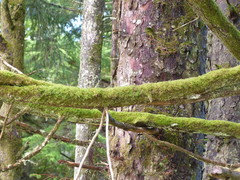
tapla (mid-Michigan, USDA z5b-6a)
8 years agoJane - the alternative you offer is exactly where these growers are coming from, what they are fleeing because it does not work for them. One way offers a chance at mediocrity, something few aspire to. Taking the more scientific approach is only a tiny bit more effort - you have all the ingredients in hand that you use, so why NOT combine them in a way that actually does the plant some good? After all, more air means a lighter mix. The effort to aquire the ingredients & mix them is the same. The ONLY imposition on the gardener's time or additional effort required is the need to water more frequently, and I can't remember encountering a gardener who wouldn't trade the promise of better opportunity for his/her plants for the added effort of cutting watering intervals in half.
If a grower tells me they're away for a week at a time and needs to have their plants go a week between waterings, the FIRST thing I mention is, "You can do it, but there will be limitations." It's simply a fact of life - nothing more.
Of course you and other growers don't intrude on my knowledge or spaced. I'm always grateful for those growers here who understand how soils work and can offer reliable advice about how to get the most out of the growing effort - it saves me time and effort. I do, though, feel the obligation that people reading any thread I participate in receive the information they need to make intelligent decisions. I don't care about what is easiest - I'm interested in helping people coax the most potential out of their plants, and you or I have no business deciding what might be too difficult for another grower. They know best how invested they want to be in the growing experience. You've noted the feedback, so you know that approach works. If you say mix MG soil with 1 part bark, and 1 part perlite, and I know how to change that ratio to make it work better for the plant, I feel an obligation to speak up. That's one of the main reasons I retain a high degree of credibility. I always have the best interest of others (and the plant) in mind and I don't operate at beyond the limits of my knowledge.
I truly believe that an understanding of how water behaves in soils is the most significant impediment limiting the efforts of a huge % of hobby growers - well over 95%, and most never get beyond the limitations. Don't forget that the growers who spend time learning here are the cream of the crop. If you move off the growing fora here at Houzz, you'd be amazed at what passes for advise, further illustrating that most people don't have a clue about how important a good soil is to root health is to a healthy plant. Why ask growers to take baby steps around the topic of water retention when they can put it behind them via an hour's worth of reading? Getting past the limitations of excess water retention offers much more forgiveness of watering mistakes and can make a reliable & controllable nutritional supplementation program a snap. It makes a huge difference in the ease with which a grower can maintain plants in good health. It just doesn't seem fair to withhold information from growers that can so easily help them get more for their efforts.
I'm not sure what "gentle education" is, but I've received several hundreds of thank you notes, many of them very moving, for putting together information that transformed someone's growing experience overnight (their words - not mine), which is a powerful incentive to keep up the effort. What works best for the plant doesn't vary by geography. A hibiscus or petunia in FL likes the same things a hibiscus or petunia likes in MI. Both prefer the same type of soil in MI as in FL. It's true you might need to water more frequently in FL, but that's a part of growing. If a grower wants to sacrifice part of the plant's potential for an extended interval between waterings, so be it, but I'd ask of all if it's better that he is informed enough to understand there is a sacrifice in potential being made or should he remain blissfully ignorant? The way I approach sharing information endeavors to eradicate misinformation that makes it too easy to make uninformed decisions. Your approach leaves the grower feeling that there is no sacrifice to be made for using soils with inherent limitations, more specifically - excess water retention.
Ideally, a grower would wisely build aeration into the soil up to the point where the soil holds little or no perched water. This is ideal for the plant. From that point, increasing water retention varies inversely with a decrease in the plant's ability to function normally. That's an important piece of the growing puzzle and one growers need and in my experience want to know.
Al
jane__ny
8 years ago"One way offers a chance at mediocrity, something few aspire to."
I disagree. Most people are thrilled with mediocrity. They don't have time or desire for more. They want to keep their plant alive. I offer them a simple way to do that and it involves the 'whole picture.' Not just potting mix. Light, water, air movement and temperatures.
Your opinions are elitist, for a very small group of people That's fine, but it is a minority. On this forum, the people who jump on the gritty band wagon are few and far between. Most do not return. The average person with busy lives, monetary restrictions and physical restrictions have no interest in a perfectionist way to grow. They want their plants to live and maybe one could consider that mediocre. If the plant grows, and looks healthy, they are happy. They will make the small changes necessary to achieve that. But there is no way they are running around looking for granite, screening bark. Bonsai growers are specialty growers. You cannot expect the average person to adopt that attitude unless it becomes a hobby. Your approach turns the average person away. I don't feel it is helpful at all.
We are talking about different groups of people. You appeal to the folks who want to invest time, energy and money on their plants. Your theories are interesting and catch the people who love learning that way.
"Why ask growers to take baby steps around the topic of water retention
when they can put it behind them via an hour's worth of reading?"Because they won't do it! That's why. They are not reading your long, scientific explanations. They are clicking on Google and up comes Garden Web. They are looking for repotting advice. They are not buying granite, chicken grit or anything more than MG or bark. That's the reality.
I deal with people who want their spider plant to look better. Its hanging in a dark corner and overwatered. They have no interest in the technical behind what I suggest. So they get a simple plan which works and they are happy.The 'clicks' on this website are meaningless if they don't produce return visits. If one analyzes the clicks on your numerous long articles, the number of people who actually follow through on the advice you give, or even read is minuscule. Most might click through a Google search but never post. I wonder why? Easy for anyone to check. This forum is losing traffic because of the elitist views, and the domination of one point of view. Time to offer advice for the real world of the average grower. Not from a bonsai point of view.
I am a hands-on person who works with people weekly teaching and helping. I don't have time to sit here on a forum for hours at a time. My 'thank you's' and appreciation are in real life. I know what is going on with the people I work with.
I am not recommending anything that is harmful. I have never recommended straight potting mix. I practice what I preach.I am a specialty grower. I grow orchids, I have ribbons and awards. I teach classes. Have been doing this for over 20 years. I've been around the block for many years growing all sorts of plants and gardens. I'm not stupid nor inexperienced. I don't put myself out on a public forum giving advice that is not tried and tested.
You grow bonsai. What large container plants are you growing? I see photos from many years ago. Where are those plants now?
Not a criticism, but stick with what you know. Don't keep using 'science' as your proof. Proof is in the pudding. Grow some large plants in large pots. More than one or two. Lets see how they fare over the years. Try growing them in your living room, try to siphon water out of those trays on your nice wood floors. Try repotting big plants each year. Please don't keep them under your state-of-the-art expensive lights in your basement. Most working people could not afford to do what you do. Huge light units, big tables of trays and watering and draining devices. Fantastic! Would love to be able to control my environment like you do. Where does the average Joe fit in that picture?
You grow itty bitty bonsai's. Lots of skill with those, but unless you are also growing large plants and trees in your home, I don't think you should be giving advice to the average grower who grows lots of houseplants.Try repotting 10ft tall ficus every year with gritty mix. Throw in a few Money Trees, Hibiscus, Citrus. Suppose you live in a condo, small place with no yards or wheel barrels. No way to afford buying all the things you recommend for many plants. How does a woman lift a 10ft plant and do root pruning? How does a person water without the pots draining all over their floors?
I have my methods, you have yours. I would appreciate you sticking to your posts and stop trying to discredit mine. If you were sure of what you advise, you would leave me alone and stick with what you know...bonsai.
Jane
halocline
8 years agolast modified: 8 years ago"Don't keep using 'science' as your proof. Proof is in the pudding."
You're absolutely right!!! The proof is in the pudding. and BB's.
Rob
jane__ny
8 years agoRob, I don't know who you are and how many years experience you have under your belt. But before you attempt to discredit me and my experience, please know, I know what I'm talking about. I've been on this forum since its inception. My main hobby is orchid growing and have been doing that for a long time. I grow numerous potted plants and have built large gardens and flowering beds. Al and I go back many years.
I don't know your experience and I assume you don't know mine. Please don't be rude. This is an open forum, all are welcome.
The photo I posted is of a 10 ft Pachira Tree which was sorely in need of a repot.
Here's the story about that photo and tree. We moved from NY to Florida and took many of our large potted plants with us. This tree (in the photo) should have been repotted 3-4 yrs ago. It came with us through four different moves, lived with some people who helped hold my plants while we looked for a house. This tree was neglected because we didn't have a place to keep it. We lived in rental condo's.
After all those years and neglect, I was amazed at the soundness of the roots. There are three separate trees crammed in that small pot. I see no sign of 'perched water.' Thick roots circled the bottom of the pot. All healthy and thick. I thought perched water rotted roots. Do you see the bottom roots looking rotted? There was a thick mass of bottom roots, not a rotted root in the pot. How could that be possible according to the 'science?'The upper mass was filled with a thick mass of feeder roots. If you look closely, do you see any puddling of the mix?? You can clearly see the perlite and bark is where it was 5 years ago when the plant was repotted.
Before you post a photo of a dead tree trying to depict my plant, what is that about??? If you see anything in that photo of the root mass that suggest a dead root mass, pudding mix, please state that. It would be very helpful to viewers. Do you see a plant that appears to be dying? I'll post a few more of that tree to give you an idea.
After this photo, I cut away 1/3 of the root mass. I cut the large anchor root. I raked the rest of the roots and hosed all the mix off the roots except for the feeder roots. The tree was then potted in a large 26" pot with Miracle Gro, large perlite and bark. Same mix it was put in 5 yrs earlier.The tree, a month later has not lost a single leaf. It is making a large flush of new growth from each trunk. But this is what I experience with all my large potted trees.
Light is the main factor. That is what is not addressed on this forum. In my experience, light is the limiting factor, not potting media. Light trumps all. Give a plant good light, control your watering, push it to its limits and you will get both good leaf and root growth.
This is a photo of the tree the day of the repot. Three separate trees in one little pot (16"). Does this tree look like it is in decline?

This Pachira grew almost 4 feet in three years. Is that mediocre? Not in my eyes.
Hosing off the mix. Please notice the large root mass all the way down the mass. Does the plant look unhealthy? Notice any small leaves? Does this look like a dying tree? Not a single leaf was lost. Plant is flushing new growth. It will be cut back next year to control growth.
Would love to hear your opinion about why you felt this was a dying tree?
Janehalocline
8 years agoNever said it was. The pic above was a random choice. (I do that a lot) Its of the beautiful Oregon landscape.
Almost all areas of growing are limiting factors, MOST people overlook the soil and what lies below. (And money trees aren't exactly hard to grow, their like philodenderons.)
I've been a serious grower of an extensive library of plants since 1985.
This tree was repotted last week.
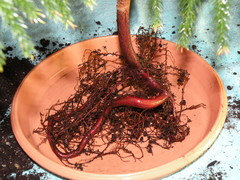
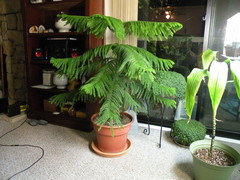
16+ years old. Also, no one said grow in pudding. It's an analogy.so... RELAX.
Rob
tapla (mid-Michigan, USDA z5b-6a)
8 years agolast modified: 8 years agoJane - think about what you're arguing about. You're suggesting that people mix Miracle-Grow potting soil et al in a 1:1:1 ratio with bark and perlite. I suggest that a 5:1:1 mix is much better because you actually get some benefits in o/a porosity and air porosity at container capacity. Same materials, different ratio. HOW is your suggested ratio any simpler and explain why it's better. You talk about media being too heavy, but the 5:1:1 ratio holds much more air and less water than your prescription, so it's actually quite a bit lighter than what you're suggesting. Yet, you still want growers to tolerate a reduction in potential root health so they can mix soils in a 1:1:1 ratio. Why in the world SHOULD they? How many people are there out there that would knowingly sacrifice plant potential for the convenience of watering intervals measured in weeks instead of days?
My opinions might seem elitist to you, but I guarantee that they don't seem so to others. I wish you could see my mail over just a 2 day period. There is never a time when I'm not carrying on at least 10-20 conversations with growers off forum, and that doesn't include the quick 1-question messages - most often the intercourse is about soils. You haven't noticed the thousands of growers and other internet sites that discuss & recommend both the 5:1:1 and gritty mixes? That's the largest part, by far, of the whole picture. People will and do make the effort to use the same materials you suggest to build soils that better serve the plant than those you suggest, so saying they don't/won't do it is well wide of the mark. They do and have done it by the thousands.
That you have no interest in anything technical is exactly why these discussions play out over and over. Ignoring the laws of physics doesn't change them, and they are VERY predictable when it comes to water/air relationships in soils. You don't have the knowledge of soil science or plant physiology it takes to debate me, yet you persist in constant argument.
I've said before that the picture of the pachira illustrates a sickly root system. It's obviously not happy, but if you're happy, that's all that matters. Blame it on whatever factor you like, but it was a severely limited plant.
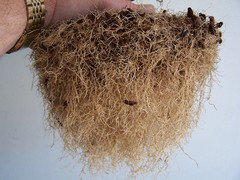
This and the houseplant forum has been peaceful for a few years. Now you're back, pushing the same buttons you pushed before you last exited the scene. My hope is that others and admin see it for what it is. I get that you don't like me, but I do have the best interest of others in mind always, and I maintain a high level of credibility because I don't try to bluff my way through anything - I can always explain to the nth degree why I offer the advice I give. I never, under any circumstances rely on "It works for me", which is a cornerstone for you. I rarely mention my experience. I provide factual information about how things affect plants and hope that growers make decisions that improve their results.
Why don't you just have your say and let me have mine and from there, let the readers decide who they want to believe? If we disagree, support your argument instead of attacking or trying to discredit me. Whenever that happens, it calls to attention the weak footing the person attacking is on.
BTW - More light (another hot-button issue) cannot 'make up' for an unhealthy root system any more than an excess of N can make up for a deficiency of K. Liebieg's Law of the Minimum illustrates that at any given time the most limiting factor is what limits a plant's growth/vitality; so, an improvement in light ONLY benefits the plant when light is the most limiting factor. Poor root health inhibits water uptake (limits growth and photosynthesis) and nutrient uptake (limits growth and photosynthesis), all of which inhibits the plant's ability to turn light energy into food. That's been explained many times and confirmation of that fact is only a quick search away, yet you insist on continuing to post your belief that light is the cure all. Growing is a holistic endeavor, and the smart/ determined/ proficient/..... grower strives to eliminate the limitations, not accept them.
Al
halocline
8 years agolast modified: 8 years agoI live in CO. The Mile High city, Where cannabis is a multi BILLION dollar industry. I don't frequent marijuana forums, but, the ONE I did happen across, mentioned "tapla" by name, and said: By "following tapla" is how they produce such a high quality product. These people are about the most serious growers (and sophisticated) you'll find anywhere!
This was just one, forum that I ran across randomly through a google search, so, how many other millionaire growers rely on Al's scientific information? Hmmm? Words spread fast. How many rely on yours Jane?
By posting this comment, I would like to assure readers that: I, DO NOT USE CANNABIS MYSELF, BUT, I am pro marijuana.



Rob
tropicofcancer (6b SW-PA)
8 years agoThe word "bonsai" seems being misused to me. As far as I can tell it means a "plant in a container". The size of the container is just one of the issues. In fact, there are artists and practitioners who regularly experiment and master the art with large specimens in quite large containers. Quite impressive I must say. I also think, the lesson from bonsai world is that of pushing the limits of what makes a plant thrive in a container that is "just enough" for it to thrive "happily" and have impressive life-like qualities.
I do not claim to be a bonsai expert. But I have been growing plants of various sizes in various containers for 40+ years. What has fascinated me about bonsai is the idea of pushing the limits. The idea that what wants to be naturally a 50 ft tree can be made to thrive in a pot so small that it seems impossible. Yet through "years of experience" and science, the masters came to the conclusion that the soil composition and matching watering and fertilization technique is the key to growing in a container. My common sense says that the first thing a container does is severely limit the resources available to one half of the vital part of the plant no matter how much light, water, humidity and heat the top half gets.
I am not tied to the gritty mix by itself. I use it as a guideline. In the bonsai world, there are other competing mixes - some that reduce the weight, some that increase the water retention, etc. And there are very educational endless debates about several schools of thought. But what I like about these mixes is that they can support a much larger plant in much smaller volume of soil but it is still bottom heavy - so it would not tip over easily or a windy day would not uproot the plant easily. And yet it holds a surprising amount of water and air.
If I could find shallow pots easily I would use gritty-like mix for most of my plants (tropical and otherwise). To me it is much easier to move them around than deep pots with a mix that can support both physically and nutritionally much less.
My largest is a 15 yr old 6ft mango tree in a 4 gallon container with a gritty like mix. Not a single fat root circling the pot or the bottom. I repot it every three years or so. Yes it is heavy but still movable. But difficult to tip it over. On the other end of the spectrum is a banana which hates the gritty mix but loves the bark based mix. Its roots literally displaces the soil with its fat white fleshy roots. It makes it own air spaces. So I just help it with a lighter mix that it can displace easily. It is heavy too since those fleshy roots hold immense amount of water.
Finally, Jane - I have a question for you. How does your experience so successfully growing orchids inform you about growing plants in containers? I am sincerely not trying to start a fight here. Trying to understand. I do grow some orchids - in containers - god forbid. But I find the science and art of bonsai culture is more akin to container plants (small or large) than it has to do with orchids in containers.
And itsy-bitsy is more apt for orchids than it is for bonsai. LOL - just kidding around.halocline
8 years ago"Bonsia", literally translates into, Tree in pot, or tree in tray. The goal of the art of bonsai, is to maintain a dwarfed size specimen in a shallow container, and making the tree look ancient, no matter the species or the age.
Originally I believe, this started in China thousands of years ago, to transport medicinal plants, and trees. Eventually finding it's way to Japan, where bonsai became more refined - an art form.
Rob
tapla (mid-Michigan, USDA z5b-6a)
8 years agoI have a LOT of large trees - large meaning large diameter trunks at the base. These trees are very young by bonsai standards, 3 dug from my nursery beds this spring and the one on the left purchased from a Lynchburg, VA grower by a person who entrusted its care to me until it is ready for a pot. These trees are completely raw and will only take the first steps of their journey toward believable bonsai after a full year of wild growth and recovery from being lifted from the ground. The thinnest of the trunks is still quite a bit larger in diameter than a 12 oz soda can. I have at least 25 trees equal to these in size or larger, so it's not like everything I grow is a palm-size tree.

Bonsai is a form of container culture, but it is far more difficult than growing pots of flowers or tomatoes because of the limitations imposed by very small soil volumes, which multiplies stress factors, and the manipulations that go along with bonsai culture. My experience is, those who are proficient at bonsai are already very advanced container gardeners. This is true because you can't be proficient at bonsai without the knowledge and skill set it takes. It doesn't happen by accident - it takes work.
It's interesting that one would think that bonsai methods and techniques should somehow be isolated from other forms of container culture, or that because someone is proficient at bonsai, his skills don't apply elsewhere; but the fact is, many hundreds if not thousands are using information I (and other bonsai practitioners) pass along to keep their plantings healthy and looking good. It's sort of like, an aeronautical engineer might not have a lot of interest in building kites, but the average kite maker could probably learn something if he's inclined to share. Joe on the corner who's built a couple of kites might think he knows better, but that usually doesn't prove to be the case.
I think it's wrong to deprive growers of information that can enhance their growing experience through the simple act of sharing. Why not alert people to more advanced techniques or technical information they're unlikely to be exposed to by anyone other than a bonsai practitioner? I like bonsai because the challenges and levels of accomplishment are endless, so I have to believe there are a high % of growers out there who are willing to invest some time and energy in improving their skills and challenging themselves. I SEE it in growers ALL THE TIME. They look at their results in a soupy soil and go looking for an alternative. Thousands of growers have had 'the light go on' when they read about how water behaves in soils and how to reduce or eliminate its limiting effects. Some of them get so excited I think they might wet their plants (groan in unison now).
Al
jane__ny
8 years agoI am a practical grower. I grow both orchids (some quite large) and 'dirt plants' in large containers. I would never recommend a grit mix for large container plants both for cost and moisture retention. The assumption that bonsai growing is similar to large container growing is frankly, wrong.
There is no argument, I didn't start an argument. I stated what I do and what works for me. Al, you continually try to discredit what advice I offer and my experience. Your attempt to chase others away produces a 'crowd-type mentality.' That doesn't happen on other forums. It isn't helpful to anyone. Its not your place to do that. Let everyone discuss openly.
Growers have different styles and techniques. Growers show respect and do not start arguments, they just state what they do. People have the freedom to choose, or they should.
Your attempt to dominate any different style is arrogant. There are differing opinions and experience. All should be respected. All should be welcome.
You have not answered any of my questions. How does your rootball compare to a plant grown in a 20 gal container? How would you grow that plant, 8 ft tall on your living room, wood floors? How would you lift that 20, 30 gal container outdoors? Many people grow large trees in their homes.
I like to offer a practical alternative. That's it. No argument with you or any other grower. This is 'Container Forum.' Designed for all size container, not just itty bitty containers.This forum is open to all opinions and discussion. This is not a private forum.
Rob your plant looks good. Its also an itty bitty. I'm not addressing those. Al's the expert on itty bitty. I'm addressing large container plants. BTW, I am quite relaxed. Just trying to help the average grower who does visit this forum and is not interested in bonsai. They just want their living-room plants to survive. Nothing sophisticated.
Grow a plant in a gritty mix in poor light. Guess what happens?? You'll get a dying or dead plant. That's my point about light. Which limiting factor is most important?..simple. It bothers me that light is rarely addressed on this forum.
No one should have the right to demean other people. These forums become interesting and helpful when we hear other points of view. It should not become an argument.
Open minds, open thoughts and experiences are very helpful. That is the best way for any of us to learn. No one should ever dominate experiences of others. We all need to choose and decide for ourselves. Everyone should be allowed to share.
Janehalocline
8 years agoOk Jane, I'm sorry if I hurt your pride a little, but, from what I've read, you're not completely absent of blame here. You seem to be using "itty bitty" in a provocative way. The (above) pine tree is 40 inch's tall, and I have set an old glass water bottle (19 inch's) next to it for relevance.

I also have a Dracaena Fragrans that stand's at 79 inch's (taller if it were straight). In this photo, I had to put the (19 inch) water bottle on a 17 inch step stool, just to get it in the picture, it's nearly to my 8ft ceiling.

And this Philodenderone Tree is simply huge.
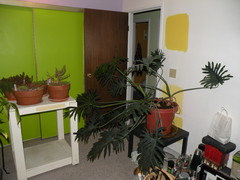
So, you want to talk about light... What kind do you prefer? (Aside from the Florida sun.)I've used different kinds, Fluorescents, Compact fluorescents, Metal Halide, High Pressure Sodium, and combinations. I currently use strictly T5 HO Fluorescents in three separate grow rooms.
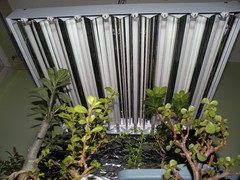
One: Cacti and succulents.Two: Bonsai and herbs.
Three: Bonsai and Groundcovers.
All brought together with various house plants, like a botanical garden. In the Summer, I move many of them outdoors onto a balcony.
So you see, I'm not just an "elitist" bonsai grower.
Obviously you and Al go back a ways. IMO however, Al is, what set's this forum apart from others, He gives me straight facts, no misinformation, and makes it easy for people to understand.
Although I've not been a member here long, I have seen other people just like you; people who just cant stand it, cant stand that they cant find a chink in his armor. (Horticultural Education)
Then there are others, whom try and prove him wrong, by posting bulk information written by others than themselves, which they found on the internet, all because of ego.
I don't need to defend Mr. "tapla", he can stand on his own merit, but, the longer you let it get to you, the more it's going to eat you up.
Perched water is not your friend.

RobLoveplants2 8b Virginia Beach, Virginia
8 years agoHello Everyone!
i just wanted to add that I enjoy reading what everyone has to say and I also believe people can make up their own minds about taking what path they want to choose when deciding what will be best for their plants and trees.
Just being able to read about proper mixes and why they work has always fascinated me. I think people come to the forums to learn and if they read some of the threads that are full of information that might make them re read and think about nutrition, aeration and proper fertilization, they have found a place to settle in and learn how to make their plants healthier.
i am one of the growers that make my own mix and I have found that it is very easy for me to make it as I need it. My life is quite busy with my job taking me away for days at a time, so I don't think it would be difficult for anyone to make a mix with Cherrystone, Gran-I -grit if they choose to find it. Once you take the time to invest in locating what you need and have it on hand, it just takes the same amount of time as any other bagged mix or changing a bagged mix and amending.
What is important is why we are doing this and why it works well for our trees. When we make it our choice to read about proper mixes and why they work and apply what we have learned it will make sense. I love coming over to this forum and seeing some of the comments.
I grow all types of trees from tropicals to large palms to little Conifers to other types of succulents. My real addiction is Plumeria and Adeniums. I do use the Gritty Mix in a lot of my containers and or I will make a 5-1-1 for some of them as well. I have had great success with my trees growing in different size containers. My containers are little ones for some of my Bonsai trees and will extend to huge containers for some of my huge palms.
People that have an interest In growing will come here to ask questions and learn.. It is a wonderful forum to be able to see what we have found to work for some and what will work for others, but if they want to understand why some mixes are better and learn about the science that is backing up these mixes, this is the place to start...
I am glad that I came here years ago and took the time to read these lengthy post about soils , mixes and fertilizers. It has changed my growing abilities and this is what I was searching for.
Take care,
laura
tapla (mid-Michigan, USDA z5b-6a)
8 years agolast modified: 8 years agoThanks, Laura & Rob.
How is a soil that holds more perched water than the 5:1:1 mix (using exactly the same materials), and in doing so limits the plant's potential, any more practical than methods I espouse? You talk about me demeaning you, yet your most recent post is little more than a tirade focused on my diminishment. Tearing me down doesn't build you up or make your advice any more appropriate/believable. I really don't mind your 'attitude' because I'm more interested in actually helping others and I don't have credibility issues. BTW - why not compare YOUR suggestions to the 5:1:1 mix - closer to apples to apples. I don't demean you, I disagree with you and carefully explain why I disagree. You simply disagree and offer rambling explanations (usually personal) that don't apply to the topic. You don't even come close to having the understanding of plant physiology and soil science that I have, yet you're the only person who regularly/actively seeks to argue about these topics and reopen old wounds.
You can't refute the points I make because they are scientifically sound, so the next best thing is changing the focus and trying to drag me into the mire. I don't need to go there because I have no trouble supporting anything I ever say, and I have no need to diminish you because you haven't the ability to diminish me. If you feel the need to be noticed and appreciated for good advice, don't sacrifice your credibility to forward a vendetta, or take on more than you understand and then blame others for disagreeing. Therein lies the problem - same as last time and the time before .....
Al
Nil13 usda:10a sunset:21 LA,CA (Mount Wash.)
8 years agoThe notion that aggregate media is not suitable for large plants should be put to rest with the research going on at the University of Missouri regarding gravel beds. http://www.plantsci.missouri.edu/PS2210/mgb/mgb_home.htm
tapla (mid-Michigan, USDA z5b-6a)
8 years agoThe expression of opinion is simply an exercise
of the human need to be heard. Too often it's an exercise that encourages us to make conclusions without adequate information. Nil's offering is an example of one of the great tragedies of science - the slaying of what might seem to be a beautiful hypothesis by a small and rather ordinary curd of fact.
"The destroyer of weeds,
thistles and thorns is a benefactor, whether he soweth grain or not." ~ Robert IngersollAl
Nil13 usda:10a sunset:21 LA,CA (Mount Wash.)
8 years agoIDK about you Al, but seeing all those big BR trees in that PDF with great root systems makes me jealous. Heck, I would love to pickup 20 boxwood from a nursery that look like that. I'm sure the guys I have humping 24" boxes up into the hills would rather they be BR. lol.
tapla (mid-Michigan, USDA z5b-6a)
8 years agoNo doubt about that. The last time I was in northern BC I glassed from an area that had been replanted after it was timbered off. The slopes were almost vertical (60* or steeper) and there weren't even logging roads to get the guys high so they could work downslope. It's hard to imagine row planting of spruce/ fir on those slopes, but plant in rows they did. I tip my hat to the guys/gals that work that hard - amazing.
I really think one of the most beneficial aspects of forum settings is the parsing of information disseminated. Except in chronic cases, I normally don't look at disagreement as an attack on me, I look at it as an opportunity to expand on whatever ideas or thoughts inspired the initial offering, shore it up so to speak, which only reinforces a person's credibility while offering others the opportunity to decide who they want to believe.
Al
tropicofcancer (6b SW-PA)
8 years ago"The expression of opinion is simply an exercise
of the human need to be heard." - Priceless Al.I am deeply
rooted in science and I am always interested in others explanation
rather than opinion. I will change my opinion on a dime if some ones
explanation is better than mine. The 'aha' moment of understanding or a realization is much more satisfying. And I do believe that most people coming to this forum with their curious dilemma would appreciate that 'aha' moment.Those bare root pictures are awesome indeed. I should take more pictures of the roots when re-potting just so that I can keep track of my progress or lack of it.
jane__ny
8 years agoGreat growing, Laura. I also grow Plumerias and have for many years. They are beautiful and I enjoy their flowers and fragrance. Grew them in NY in large pots. In summer they went out on our deck. Lots of beautiful flowers. During winter I brought them in and discovered I could keep them growing under lights. They would flower inside. Wonderful trees. I have photos I'll have to look for to post. In Florida they are in heaven, blooming constantly. They are truly a full sun plant.
Laura, I totally agree with your post. Very well written. I wish I had the talent to keep my posts shorter and more direct. Al is correct, I do tend to ramble both in writing and talking. My husband and family can attest to that.
Rob, I assure you there is no hurt to my pride, I don't know why you think that. I'm merely offering an alternative way of potting plants which has worked for me. Nothing more. I would offer that my plants seem not to be affected by 'perched water'...nice picture, btw. I cannot see through my pots, but I do see lots roots growing down to the bottom of the pots and outside the drain holes. If my pots were holding water and wet soil, wouldn't those roots be rotted or non-existent? That is not what I find. So, I have trouble responding to that suggestion.
Al, what can I say? I find myself trying to defend myself each time I
offer advice here. I will try to ignore the way you respond to my posts. I don't know why it bothers you so much.
I'm not trying to hurt anyone nor giving poor information. Just trying
to offer an alternative way to pot plants for people who are interested. I am not
saying what you offer is wrong. I know it isn't . No argument about
what you suggest. But there are alternatives which work quite well. I don't like 511 because there's too much bark. Adding 1/3 of potting mix, bark and perlite works better in my opinion for large container plants.I don't want to set off any type of power play at all. I am not a scientist or Master Gardener, nor pretend to be.
Tropicofcancer, no science here, just years of experience. What I would offer is that there are so many variables in play when trying to grow well. I have not found any single one of those variables to work well over the others...light, watering, air movement and mix. If a grower overwaters they will likely kill the plant no matter what it is planted in. If there is not sufficient light to produce leaf/root growth, the plant will fade away. If the plant has sufficient light and controlled watering but air movement is absent, most likely the plant will decline from fungal and pests. Vacationing plants outdoors in summer, getting those breezes, fresh air and sunshine, things which are hard to provide indoors, are so important for health.
Nil13, interesting PDF. Interestingly, after moving to Florida 3 years ago, I have learned that any plant grown in gravel or rock will suffer due to the sunlight and heat on the gravel. The sunlight will heat the rock and will kill off the roots. They literally cook. Many people use gravel as mulch in Florida and the plants die off. Maybe that is not the case in California, but it is in south Florida.
I love to garden in pots and in the ground. I have learned by 'hands on experience' and fiddling around with various things over many years. When I found a method that worked for me, I offer that to other growers. It doesn't only include mixes, it includes light, watering, and air movement. So much of growing is environmental and the growers time and interest. There are so many variables involved in growing well, there is no simple trick.
Growers have the choice to decide what they want to do. That's what I've always done. That's what people decide as their experiences develop.
I would just appreciate being able to post my advice and views without being seen as someone who is threatening another point of view. I'm not!
Please, lets have an open forum with lots of different growing styles. No malice, just different ideas. People can take it or leave it.
Jane
tapla (mid-Michigan, USDA z5b-6a)
8 years agolast modified: 8 years agoJust to be clear, you're suggesting a mix of pine bark, potting soil, and perlite - the very same ingredients that are in the 5:1:1 mix but combined in such a way that the mix will hold much more perched water, and trying to sell it as an alternative. It is an alternative, but it has inherent limitations that are conveniently left out of the pitch. You're very quick to thoroughly point out the limitations of, say, the gritty mix when the opportunity presents itself, even though I am always quick to offer both advantages and disadvantages, so it's only fair to note that mixes that hold notable volumes of perched water are inherently limiting in direct relation with how much excess water they hold. These are just every day facts of life and truths others need to know in order to make good decisions. We discuss them every day of the year on thousands of threads. That you don't think perched water is limiting is part of the issue. It is. It HAS to be. It can't be otherwise because it limits the root system's ability to function normally/efficiently. Nothing more really needs to be said. If you want a longer interval between waterings and use perched water to reach that goal, you must accept the limitations that come with it.
And more light cannot make up for other limiting factors unless lack of light IS the most limiting factor. It does absolutely no good to give a plant more light when its most significant limitation might be nutritional, related to root health, temperature, ........... A working knowledge of plant physiology and soil science would make these confrontational discussions completely unnecessary. Growers that lack the ability to see the whole picture make up the pseudo/quasi-science to fit their observations with startling regularity. Most readjust their thinking in the face of good science and sound reasoning, but some will never let go of their beliefs, no mater how much sound information is provided in refutation. You'll note that I have no interest in changing your mind, only in seeing that others get information that can be supported by science and sound reasoning. I've been that way since my first day at GW, and it has actually served me, and I think the community, well.
"Interestingly, after moving to Florida 3 years ago, I have learned that any plant grown in gravel or rock will suffer due to the sunlight and heat on the gravel. The sunlight will heat the rock and will kill off the roots. They literally cook. Many people use gravel as mulch in Florida and the plants die off." Many people use Miracle-Gro in FL and the plants die off, too ...... so what's the point? This quote is a good example of statements that can't be supported and bold, unqualified predictions. One of the most significant factors affecting soil temp is the color of the pot and how much surface area of the pot is exposed to direct sun (note that these very important factors have nothing to do with what's IN the pot). Well-aerated soils, like gravel or the gritty mix are actually COOLER than soils like the 5:1:1 mix or what you grow in because the surface of the soil reflects more light (so less passive solar gain), and more importantly, the much greater gas exchange promotes greater evaporative cooling.
Al
jane__ny
8 years agoRegarding gravel, you don't live in Florida. I was not aware of how hot the stone gets here. I was not talking about plants in pots. I was referring to the photo of the boxwood's grown in large gravel beds. We run into a similar problem growing many orchids in rock which I did often in NY. Never ran into the problem of roots literally cooking and dying. Shrubs and trees without shading to their roots do very poorly in gravel here. The feeder roots cook. Believe it or not, I've seen it and there is not a reputable nursery who does not warn you. I do not use gravel at all. I do use stalite for orchids grown in baskets which can get airflow around their roots. They are grown in the shade of trees. No high light orchids are grown in rock of any type. You don't realize the intensity of Florida sun.
My plants do not seem to have a problem with perched water. As I said, the roots fill the base of the pot and will grow out the drain holes. I would think that would not happen in a mix holding too much water. The roots would rot and would not grow into the base of the pot. That is not what happens. The mix I offer drains well but does hold enough moisture without being soppy. If it is similar to 511 then so be it. I never looked at 511, I didn't think you used a potting mix.
Depending on the needs of the plant, I will use more or less of a potting mix. I don't promote MG, it is the easiest potting mix for people to find. I actually like Farfard but will use MG when it is what I have on hand. Most people do not want to pay the price for a better potting mix. I've never had a problem using MG as long as its amended with lots of perlite/bark.
In my experience, I have seen more underlit plants than I care to mention. Those plants lanquish and eventually decline. Many people mistake the label, 'low-light plant' or 'shade,' without realizing how much light is lost by having a plant too far from a window. If a plant stops growing, it is not producing roots which uptake water. Without growth doesn't matter what a plant is in. I promote light first and foremost.
I have no argument with your recommendations to people who choose to use a grit mix. I think its good. But the majority of people who have multiple house plants are not going through the effort to put it together. They will just continue to stick their plants in Miracle Grow.
I suggest a alternative using bark or perlite to keep the mix from clumping and enhancing the drainage. These same people are not going to get involved in perched water. I'm sure to your eyes and ears this is horrifying. But it is what I deal with on a daily basis with both orchids and house plants. Its my reality and I have found my alternative is simple enough for them to follow. It is also less expensive for them.
Sort of like cooking. Some people like to bake from scratch (I do). The majority of people haven't the slightest interest in baking from scratch. They prefer a box mix.
Not a great analogy, but as close as I can come to growing.
Sometimes you will find people who will get hooked by their successes with simple changes to their growing style. Once they do, I send them over to you. But they are few and far between.
Al, I'm not disagreeing with you or the gritty mix. Its great for those who want to get that involved. But I don't want to leave the others behind.
Jane
Nil13 usda:10a sunset:21 LA,CA (Mount Wash.)
8 years agoGravel mulch cooks roots? Have any research supporting that, because the people with PhDs to whom I posed that question said that gravel mulch reflects heat instead of transmitting it to the soil. When they get back to me with the research, I'll be sure to post it.
The growers from Florida, California, and Arizona just laughed at the notion.
Nil13 usda:10a sunset:21 LA,CA (Mount Wash.)
8 years agolast modified: 8 years agoWhile I am waiting for the good doctors to get back to me, I thought I would do a little digging myself. I came up with this study that shows lower soil temps with a variety of mineral mulches than with bare soil.
tapla (mid-Michigan, USDA z5b-6a)
8 years agolast modified: 8 years agoJane - it's not uncommon for someone to make unsupportable statements, then treat them as fact and build an entire case around them. It happens on every active forum every day of every week. I'd like to take 4 paragraphs you wrote and use them to illustrate the difference in how we think. Your offerings are in bold and I'll comment intermittently. I have seen more underlit plants than I care to mention. Those plants lanquish and eventually decline. Plants growing in light that limits their potential ("underlit plants") needn't necessarily be in decline. Decline is a condition during which a plant is using more energy than it's able to produce - nothing more than that. It's entirely possible, and it happens very often, that a plant we might consider unsightly due to it having received less light than it needs to keep it looking good (from our POV), is able to sustain life and growth under light conditions insufficient to keep it looking as attractive as we would like - indefinitely, as long as it's life span isn't limited by the fact the plant is an annual or biennial, or by other potentially limiting cultural factors. Many people mistake the label, 'low-light plant' or 'shade,' without realizing how much light is lost by having a plant too far from a window. If a plant stops growing, it is not producing roots which uptake water. Without growth doesn't matter what a plant is in. I promote light first and foremost. First, "A[ny] plant that is not growing is dying" ~ Alex Shigo, PhD; this, because growth is a byproduct of the plant's ability to make more food than it needs to keep its systems orderly. A plant that is too far from a window to keep it looking healthy can still be growing and producing roots. Even if the top of the plant seems to have stalled, the roots can still be growing because root growth always precedes top growth. Also, it does matter "what a plant is in" if it's not growing because in most cases a lack of growth is directly linked to inhibited root function, which is very often related to limitations inherent in poor media.
I have no argument with your recommendations to people who choose to use a grit mix. I think its good. But the majority of people who have multiple house plants are not going through the effort to put it together. A very quick scan of any of several fora will clearly illustrate otherwise. They will just continue to stick their plants in Miracle Grow. This is also untrue. While you focus on labels like the gritty mix and the 5:1:1 mix, I focus on helping others implement a concept, the effectiveness of which you can't question because you regularly note it's superior to methods you use. Growers implement the concepts I espouse with great regularity - primarily because it makes so much sense to do so.
I suggest a alternative using bark or perlite to keep the mix from clumping and enhancing the drainage. Drainage isn't enhanced to a notable degree until the threshold that's been described in many conversations is reached. It occurs when there aren't enough fine particles to fill potential air spaces between larger particles (the BBs and sand analogy). And how is a 1:1:1 ratio of bark: peat or potting soil: perlite better at preventing "clumping", something I've never had to deal with. These same people are not going to get involved in perched water. This is very important: They ARE involved with perched water. If your medium supports it, you're involved with it in a direct relationship based on how much of it there is. I'm sure to your eyes and ears this is horrifying. Not at all - I'm a realist. But it is what I deal with on a daily basis with both orchids and house plants. Its my reality and I have found my alternative is simple enough for them to follow. It is also less expensive for them. It takes exactly the same amount of thought and effort to locate and mix the ingredients for the 5:1:1 mix as it does for the 1:1:1 mix you suggest because the ingredients are exactly the same - they're equally simple mixes. The 5:1:1 mix is actually LESS expensive because it utilizes a larger fraction of low-priced pine bark and a smaller fraction of higher-priced potting soil ..... and it's lighter. My plants do not seem to have a problem with perched water. As I noted previously, they DO have a problem with perched water, in that it is sapping potential. You might be perfectly happy with the state of your plant's vitality, but you can be sure that anything that limits the roots oxygen supply limits root function limits the plant and robs potential. We all know the 5:1:1 mix supports some perched water and that the 5:1:1 mix already includes some compromise to extend watering intervals. Therefore, it would be unreasonable to ask growers to believe that a medium with a much higher volume of fine particulates doesn't hold perched water and that the perched water it does hold has no impact on the root system's ability to function w/o limitation. As I said, the roots fill the base of the pot and will grow out the drain holes. I would think that would not happen in a mix holding too much water. Why would you think that? When the soil dries sufficiently, more or less normal root growth resumes, and some roots will grow outside of the pot. When roots die from hypoxic conditions, it's always the finest roots that die first - the ones that do all (ok - 90%+) of the work. The most significant loss is in the constant death and regeneration of the finer, nearly microscopic roots. To replace the roots killed by soggy soils (so the plant can return to 'normal' function) is an expensive outlay in terms of energy - energy that would otherwise have been directed toward more blooms, fruit, longer branches, more leaves, or a simple increase in biomass. IOW - lost potential. The roots would rot and would not grow into the base of the pot. Roots DO rot and die, it just happens that it's the fine roots that easily get overlooked that take the hit. That is not what happens. It actually IS what happens, but this is another case of someone floating an explanation that doesn't fit the observation in order to refute something we know to be true. Perched water IS limiting and the more you have the greater the limitation(s).
I hope everyone is enjoying their Saturday - raining off & on again here in mid-MI.
Al
halocline
8 years agolast modified: 8 years agoI could, and sometimes do water my plants in the "Gritty Mix" every day - no problem, plenty of drainage. Not to mention, What kind of watering intervals are we talking about here Jane? How lazy does a person want to be? I feel comfortable watering every four days, with the 5:1:1 I can go a week or longer w/ a large plant.
To clear things up - 5:1:1 IS potting soil, what do you think is in bagged soils? Better question, what do you find at nurseries - Pine Bark, and lots of it.
"Sort of like cooking. Some people like to bake from scratch (I do). The majority of people haven't the slightest interest in baking from scratch. They prefer a box mix" - Baking from scratch, is the "Gritty Mix". "box mix" is Miracle grow. So why are you not using the "Gritty Mix"?- You spend that time baking?
This all boils down to... How much do you love your plants? If you're happy w/ what you have, and have never tried improving upon it, you will NEVER know.
Can't you see Jane, if, if you suggested potting w/ a slightly smaller percentage of MG; and a higher percentage of the other ingredients, this thread wouldn't even exist!!
Rob

jane__ny
8 years agoThanks Rob, what a nice response. I can see Al has a wonderful friend.
"
Can't you see Jane, if, if you suggested potting w/ a slightly
smaller percentage of MG; and a higher percentage of the other
ingredients, this thread wouldn't even exist!!Rob"
Why would I, when what I suggest and recommend costs less and works better. Very simple! Also, I do not screen or do anything more than mix bark, perlite and MG or Farfard together. Easy.
You don't know me as you are new... Lazy...really!!! How insulting. There are other growers on these forums beside Al. Why not check it out?
I am not a lazy gardener. I grow more plants than I should. So do most people especially those who live in condos and apartments.
I will continue to advise what works for the majority of people...who are not lazy but do have lives. Do you understand that? People have children, jobs and many other responsibilities beside their plants. Plants probably are at the bottom of their lists. I'm assuming you are young and not overwhelmed with life or disabilities. Lucky you. Please don't be so rude to assume that people who love plants are lazy if they can't do what you do. You must be quite young and single.
For the original poster, yes Orchiata works well and stood up for 5 years. I would not recommend it for the average grower as it is expensive. I like to repot yearly or at least every two years. Regular bark will work well.
Jane
halocline
8 years agolast modified: 8 years agoOK, you have one legitimate point, I don't have kids.
If you want really easy container gardening, buy some "FoxFarm-Ocean forest-Smart Naturals potting soil". It's prolly the best potting soil I've found.
As for the author of this thread, no, expensive bark that's going to last for five years isn't necessary, you will have to repot long before that to maintain your root system.
Before you give up though, check some bulk sand and gravel distributors for pine bark, that's where I get mine - High quality.
Rob
ewwmayo
8 years agoI noticed there was some discussion about gravel, soil mixes heating up, and overheating roots. For those that are interested, we did some experiments and studies on our own over in the Cacti & Succulents forum: [Short Soil Temperature Study[(https://www.houzz.com/discussions/short-soil-temperature-study-dsvw-vd~3251482).
My first post in the thread covers some experimental measurements and my second post covers the scientific/thermodynamic aspect. My third post discusses a bit about perched water and how the presence of water affects temperature increase.
The relevant heat capacities of common soil ingredients are as follows:
Grit / Turface / stone: 0.2
Pine: 0.6
Dry Soil: 0.19
Wet Soil: 0.35
Perlite: 0.38
Water: 4.19
Considering the soil mixes discussed in this thread, grit vs. dry or soil is not a very big difference, assuming the amount of perched water is not extremely high. Increasing the amount of bark would result in the container and roots taking longer to heat up.
Increasing the amount of water in the mix is obviously the most effective method, but moisture levels above 50-60% for an extended period are quite detrimental to root health (as per studies by the Center of Urban Horticulture from Washington University and Wageningen University).
Of course, the container volume would have to be quite large for this really to have a significant impact overall. Even doubling the heat capacity of a pot may not be enough to not reach max ambient temperature at the hottest point of the day outside.
Anyway - this is just one of many quite interesting topics when thinking about growing plants! I hope at least this provides some quantitative evidence and support on the relationship between temperature and soil composition.
tapla (mid-Michigan, USDA z5b-6a)
8 years agolast modified: 8 years agoI read through that thread a couple of weeks ago w/o commenting. I'm sure it's probably had many more contributions since I looked at it. Isn't it amazing how embracing the more technical aspects of growing expands your understanding of how plants respond to their environs and increases the opportunity to interact with your plants on a plane that grows higher as your understanding increases. I admire your efforts.
Al

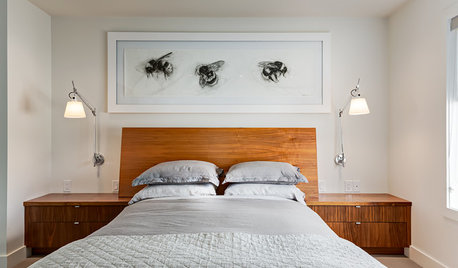

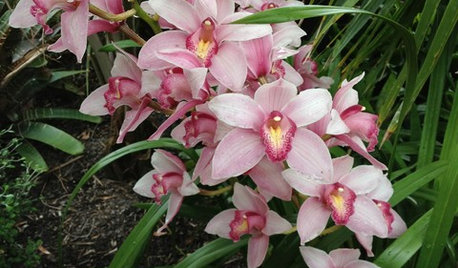
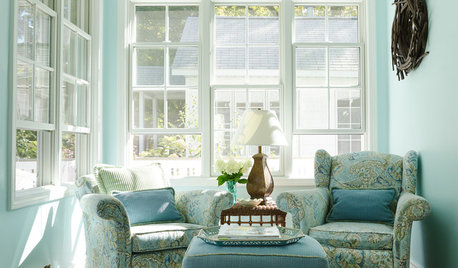



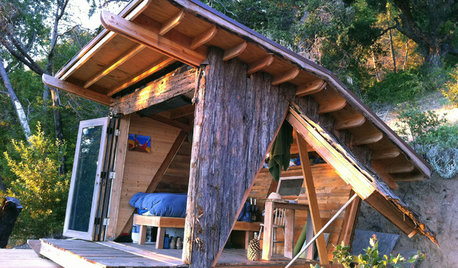







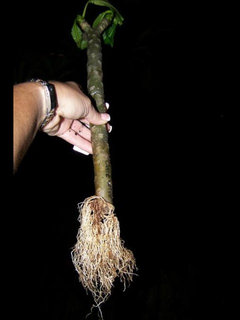

tapla (mid-Michigan, USDA z5b-6a)